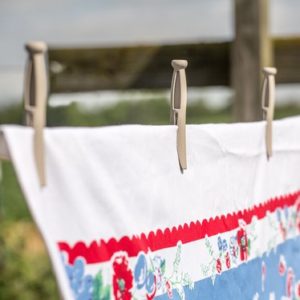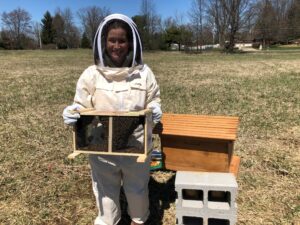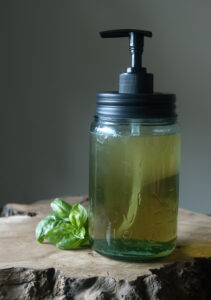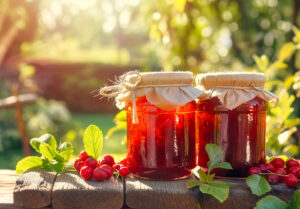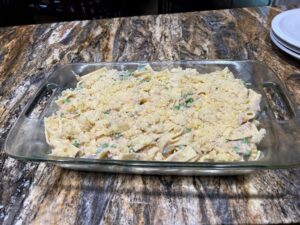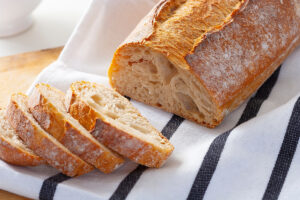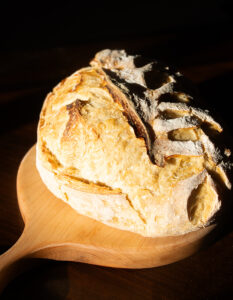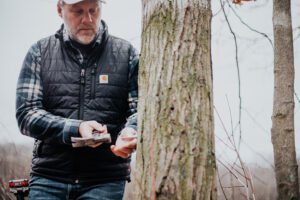Gardeners are nature’s recyclers. It’s not just frugality that makes people gardeners. There’s also an impulse to tread lightly on the earth, to consciously and conscientiously use resources that are to hand. For instance, my husband Tony and I choose to use organic amendments in our garden.
To keep things going strong, we use homemade compost. It’s manure donated from Conor, whose farm is down the road. We buy some straw from him too, and then we add comfrey to the mix. We make a sort of lasagne, building the raised bed higher as the leaves begin to surface.
Comfrey is an all-purpose garden aid too. It really is a multitasker, and a boon to any gardener. In the laziest spud beds in Ireland, comfrey helps the straw break down and feed the potatoes, which are notoriously hungry. You can also lay comfrey down as mulch to suppress weeds. Or macerate the plants in a bin for a couple of weeks and you have liquid plant feed.

Voracious slugs and snails are the bane of gardeners here in damp Ireland. Slug pubs and slug milk bars have limited success. And I am not one of those people who could go out with torches at night to pick them up and drown them Other folks swear by human hair clippings or copper strips laid near the crop, but how practical is that? The Ireland Organic Centre tells us that if you pairing comfrey with a plant that slugs love, like hostas or lettuce, slugs or snails will always opt for comfrey if it is on the menu, saving your more delicate plants.
Keeping cabbages pristine can be a challenge too. Cabbage-root fly and the caterpillars do love their leafy greens. Cabbage collars are a preferred organic solution. You can buy them but why do so when you can easily make your own, and recycle while you’re at it?
Everyone has empty cereal boxes or tissue boxes. The nice thing about the empty tissue and cereal boxes is that they have a shiny outside (often printed with biodegradable inks these days) that makes the boxes degrade slowly and this surface does seem to deter the cabbage-root fly.

First, I flatten out the empty cardboard box. I take a seven-inch flower pot, flip it upside down, and trace a circle on the flattened cardboard.
Then cut towards the centre and snip in a semi-starburst pattern to help the collars fit comfortably around your seedlings without damaging the stems. This is a great rainy day project for the family. Any child old enough to use safety scissors and hold a pencil should be able to trace and cut out the collars while working along with an adult.
There are other uses for cardboard in the garden too. (With a plastic bag levy in force in Ireland now for several years most smaller supermarkets use the cardboard boxes that goods arrive in for customers to take home their groceries*.) Rather than collect the cardboard for the recycling bin we open up and flatten the boxes to use as weed suppressant in our garden rows.

Additionally, we use it on the paths that we make so that we can easily acces our raised beds. We top the cardboard with straw for a more attractive effect, and we never have weed trouble on our access paths. Both the plain cardboard and the straw break down, and provide mulch for the next year too.
Since I am middle-aged and am slightly dodgy of limb and back I really try to avoid unnecessary weeding. To this end, my solution is to propagate sturdy seedlings to a good transplant size, which have a high chance for survival in the garden. Given that we live in a frost pocket that makes sense for us as a general strategy too. We get the beds as weed-free as possible. (Okay, I’ll be honest, Tony gets them as weed-free as possible.)
When I put in the brassicas I plant them a foot or so apart, and then I put on the cabbage collar. I’m careful not to harm the delicate stem on the small plants! Then I put some newspaper mulch in between the plants. Again, straw goes on top, just for pretty.
One final recycle that can benefit the gardener: old windows can have a second life as cold frames. You can simply hang the sashes on a simple A-frame, or search the web for more elaborate plans.
I do admit that it is sometimes hard to hang on to the heaps and piles of ‘stuff’ that is waiting for the next incarnation, especially if you have little storage space. But it is still important to keep the faith, be patient with the mess and most important, to share what is surplus to your own requirements. The less that goes to landfill the lighter our carbon footprint. Organic gardeners can really excel at lots of these light touches to earth.
*Editor’s Note: In Ireland, groceries and other retail stores charge shoppers the equivalent of 22¢ USD for each plastic bag if they pack customer’s purchases into those bags (also called ‘carrier bags’ or ‘carriers’).

